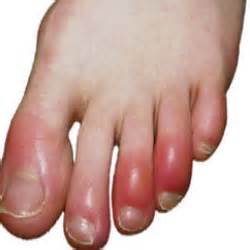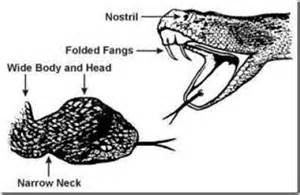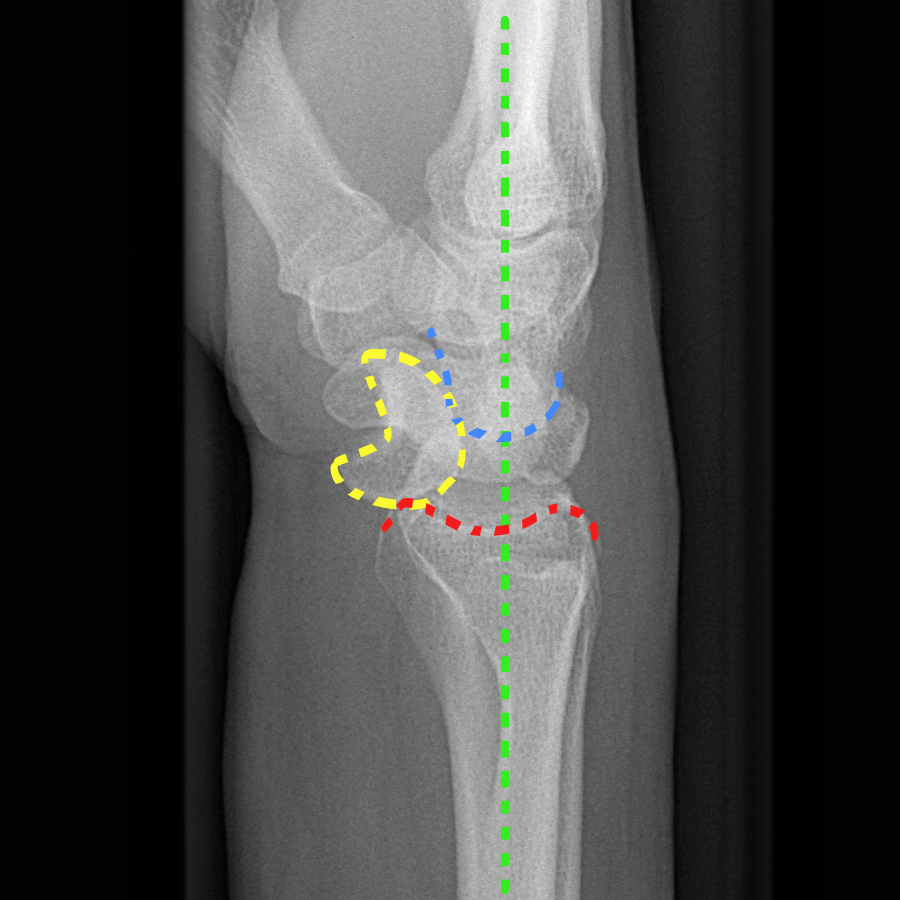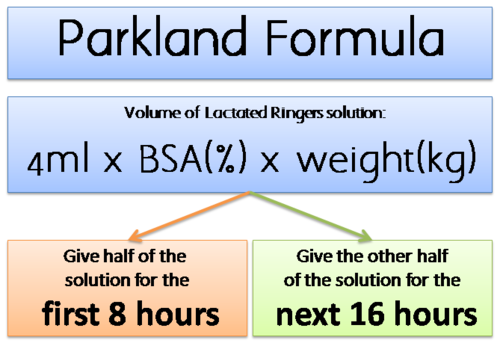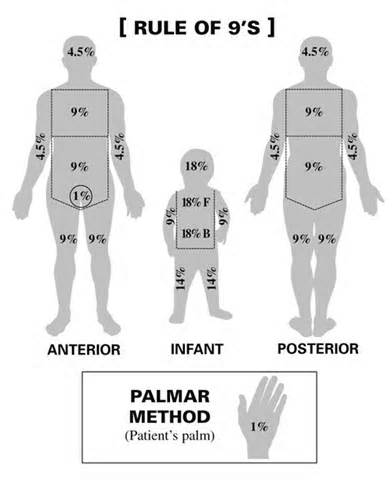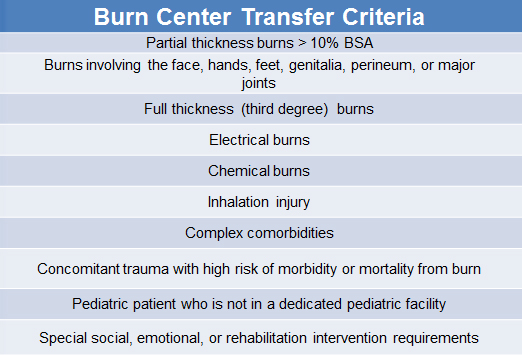Conference Notes 3-18-2015
Sorry for the long spring break from Conference Notes, but we had Simtastic, Intraining exam, AAEM, and Oral Boards. All great EM learning events!
Urumov Study Guide Environmental
Chilblains is due to cold exposure. Patients can have burning/pruritic pain. Nifedipine can be used to treat chilblains. Itching and burning pain is characteristic of chilblains.
Immersion foot is a non-freezing injury that causes a pale, anesthetic foot.
Freezing injury of frostbite results in ice particles in the soft tissue and again the affected extremity is anesthetic.
*Chillblains
Seizure of a diver at depth is likely due to oxygen toxicity. Oxygen toxicity and nitrogen narcosis are likely causes when a diver has an adverse event while at a deep depth.
When treating a crotalid snake bite. Give antivenin for local progression, coagulopathy/low platelets/low fibrinogen or other lab abnormalities or unstable vitals. (Girzadas mnemonic: spread, bled, almost dead) You give crofab initially as 5 vials and keep giving until you reach an end point of improvement of local progression and improvement of lab abnormalities.
Venomous snakes have fangs, triangular head, elliptical eyes, heat sensing pits, and caudal plates.
Immediate care of snake bites includes immobilizing and keeping the extremity at heart level, consider a lymphatic tourniquet (the equivalent of a rubber band around the arm). Do not cut into the wound or attempt to apply suction to the wound or apply an arterial tourniquet.
*Venomous snake characteristics
In a submersion injury patient, if the patient is asymptomatic or just has a cough and has a normal CXR and normal pulse ox and you observe for 4 hours they can go home. Indications for admission are dyspnea, abnormal vital signs, abnormal CXR, or abnormal pulse ox.
When treating multiple patients following a lightning strike, treat the unresponsive, pulseless patients first. This is the one multiple casualty situation where you attend first to the people who are dead. Lightning strike victims in cardiac arrest have a relatively high rate of resuscitation.
Envenomation by sea urchins, star fish, and stingrays: Treat with Hot water immersion of the affected limb.
Jelly fish nematocysts/Portuguese man of war: Remove tentacles, wash with sea water, pour vinegar on the area or apply shaving cream.
There was a discussion of using urine to treat jelly fish stings and urine is not effective.
Sea snakes are similar to coral snakes in that both come from the elapid family. Both have venom that can cause paralysis and respiratory depression.
High altitude pulmonary edema usually occurs more than 48 hours after going to altitude. Patients have dyspnea with minimal exertion. Dyspnea at rest is the hallmark. Lungs are not clear on auscultation. This is the most common killer due to altitude exposure. Treat with nifedipine or sildenafil, and oxygen/hyperbarics

*High Altitude Pulmonary Edema
HACE is the most severe form of altitude illness and presents with headache, altered mental status, and ataxia. Ataxia is the hallmark. Treat with dexamethasone, oxygen/hyperbarics
Motzny comments on Radiation injury: Radiation kills rapidly dividing cells. It is similar to radiation therapy for cancer. The most rapidly developing cells are blood. That’s why you look at the lymphocyte count to assess the patient’s risk following radiation exposure. The next most rapidly developing cells are GI. So patients with vomiting and diarrhea have also been exposed to significant radiation. Neuro and cardiac cells are the least frequently dividing cells. If the radiation exposed patient has altered mental status or hypotension or arrhythmias these patients have had very high radiation exposure.
Carlson Oral Board Day Debrief
- Tetanus case: Patient has masseter spasm following a dirty scalp wound. Critical actions were diagnosis of tetanus, give tetanus toxoid, give tetanus immune globulin (1/2 around wound and ½ in the deltoid), provide wound care with irrigation/debridement and antibiotic therapy (source of toxin needs to be eliminated), ICU admit. You can treat muscle spasms with benzodiazepines.
- Guillain-Barre case presenting with ascending weakness and absent DTR’s. Diagnose GBS and consult neuro and admit to ICU. Be able to describe to patient a progressive, ascending polyneuropathy. Performing a NIF is recommended to identify patients at risk for respiratory failure. Some residents thought the case was botulism but botulism classically is descending weakness and GBS is ascending weakness. Treatment for GBS is IVIG and plasmaphoresis.
- Digoxin toxicity: Identify digoxin toxicity and give 2-3 vials of digibind. Admit to a monitored bed. Think about digoxin toxicity if you see a rhythm strip with a fast atrial rate (aflutter) and a slow ventricular rate.
*aflutter with AV block
Be cautious giving any calcium in a patient with hyperkalemia from digoxin toxicity. Digibind will lower the potassium level in digoxin toxic patients.
- Patient seizing from leaking body packs of cocaine in his GI tract. Treat seizure with benzodiazepines. Cardiovert ventricular tachycardia. Treat blood pressure with a medication that is not a beta-blocker. Andrea felt nicardipine would be the best choice. Lower temperature with arctic sun cooling device or other hyperthermia management. Arrange an emergent laparotomy to remove the packets. Whole bowel irrigation or endoscopy is not adequate in a body packer with leaking packets.
- Lunate dislocation. Patient had a median nerve paresthesia. Requires orthopedic referral for open reduction.
*Lunate dislocation Note that the lunate (yellow outline) is not in line with the capitate and radius.
- Septic joint in a pediatric patient. Diagnose septic joint, get ultrasound to identify fluid in the joint, arrange for emergent hip aspiration, and give IV antibiotics to cover staph. Treat pain adequately in the child. Septic joint fluid count should have >50,000 wbc’s. A gram stain and culture of the synovial fluid should also be done. Synovial fluid cultures are positive in only 50% of cases.
- Acute Chest Syndrome in a sickle cell patient. Treatment included appropriate pain medication, IV antibiotics, O2 supplementation and IV fluids. Checking UCG was also appropriate. Exchange transfusion was not a critical action but it is indicated for acute chest syndrome. There was a discussion among faculty about the importance of doing a physical exam despite knowing the diagnosis of the case. The point was made that the new e-Oral format for the ABEM Oral Boards can lull an examinee into not doing an exam because you have video and avatar stimuli in the case. However, you have to be disciplined to do a full exam in addition to the visual stimuli you receive in the case. Harwood and Samir Patel comment: Sickle cell patients in blast crisis look acutely ill with marked tachypnea and severe anemia. Also some recent studies show that a reticulocyte count is not cost effective. So you can make a good case in 2015 that you don’t need routine retic counts in patients with a HGB level that is stable compared to previous levels.
- GSW to head and chest. Patient has a sucking chest wound. Management required RSI intubation, 3 sided occlusive dressing on chest wound, chest tube placement, IV fluids and autotransfusion or banked PRBC transfusion, and rapidly get patient to OR. Many people did not consider autotransfusing patient’s blood output from chest tube. Don’t take unstable patient to CT scanner prior to going to OR.
Burns Trauma Lecture
Case 1. 54yo male injured while jumping from roof of burning building.
Consider inhalation injury if someone was trapped in a closed space for >10 minutes.
Should the patient be intubated? ABG showed a PO2 of 62, CO level is 9.6%
Patients voice was becoming more hoarse. So set up was begun for elective intubation using video laryngoscopy. Patient had airway edema but was successfully intubated.
Patient remained intubated for 30 hours after transfer to burn center until edema improved. Pt was successfully extubated.
Elise comment: People who smoke while on oxygen will sometimes suffer flash burns of the face. These patients won’t need intubation because there is not a risk of airway edema. These patients are not the same as patients who were in a closed space fire.
Trauma attending comment: If you feel the need to intubate a burn patient, do it. I have never regretted electively intubating a burn patient at risk for airway edema.
Case 2. 47yo male suffered an electrical shock when his truck trailer came in contact with a power line.
New Burn Nomenclature
Superficial=First degree
Partial thickness, superficial and deep=2nd degree of varying severity
Full thickness=Third degree
*Parkland Formula
Harwood comment: All the recent data on saline shows that it causes acidosis in critically ill patients when used in large quantities. So use LR when treating burn patients with the Parkland Formula.
*Rule of 9’s and Patient’s Palm Method
Girzadas comment: Succinylcholine is safe when acutely intubating a patient who has just been burned. Succinylcholine is contraindicated when intubating a burn patient 3-7 days after injury due to the risk of hyperkalemia. So if you have to intubate a burn patient in the ICU or burn unit use rocuronium.
Update tdap because burn wounds are extremely prone to tetanus.
Asymptomatic patients following low voltage shock who have a normal EKG can go home. Pregnant patients have a risk of miscarriage and should have fetal monitoring if the fetus is >20 weeks. In kids with oral commissure burns, you need to advise parents that patients can have severe labial artery bleeding about a week after injury.
Harwood comment: In pregnant patients who have been shocked I would get an ultrasound to check fetal cardiac activity in every patient, even in those less than 20 weeks.
Lovell comment: Dry clean sheets are adequate dressing for a patient who is being transferred to a burn unit.
*Burn Unit Transfer Criteria
Naik New Adult Telemetry Policy
Limited telemetry bed availability has lead us to more closely monitor which patients are admitted to telemetry. This also corresponds with the Choosing Wisely Campaign Nationwide.
A big change is patients with chest pain and a normal EKG and a negative troponin don’t need cardiac telemetry. They don’t even need medical telemetry.
Known stable afib does not need cardiac telemetry.
Patients with AICD/Pacers with non-cardiac problems don’t need cardiac telemetry.
Cardiac telemetry is for cardio-centric diagnoses.
Medical telemetry is for medical-centric diagnoses.
They are not different levels of care. They are similar levels of care but designed for different categories of patients.
Having a telemetry monitor generally does not equal a higher level of care.
Physician judgment can trump the guidelines as needed.
Girzadas example: Patient with history of CHF and AICD/Pacer with vague chest pain, paced EKG, and negative troponin. Should this patient be on telemetry? Trushar reply: This patient could actually go to unmonitored medical bed. If physician judgment feels the patient should be in a monitored setting, that is acceptable as well.
Jeziorkowski Case Presentation
27 yo female with heavy vaginal bleeding. No abdominal pain. Patient had a history of asthma. Vital signs were normal. Vaginal exam showed closed cervix with a moderate amount of blood in vaginal vault. HGB was 6.
During her ED course, the patient spontaneously becomes encephalopathic, agitated with focal weakness.
CBC showed thrombocytopenia and shistocytes. The diagnosis was TTP. Treatment of TTP is plasma exchange. Steroids are also indicated.
Indication for plasma exchange is low platelets and hemolytic anemia.

*Pathophysiology of TTP. TTP limits the functioning of AdamTS13. Dysfuntion of AdamTS13 leads to increased von wilibrand factor activity and resultant platelet clumps. These platelet clumps decrease platelet levels and can cause stroke or renal dysfunction.
Patient improved with plasma exchange and steroids.
Additional point: If the patient has a fever over 102F that speaks against TTP. It is much more likely to be sepsis.
